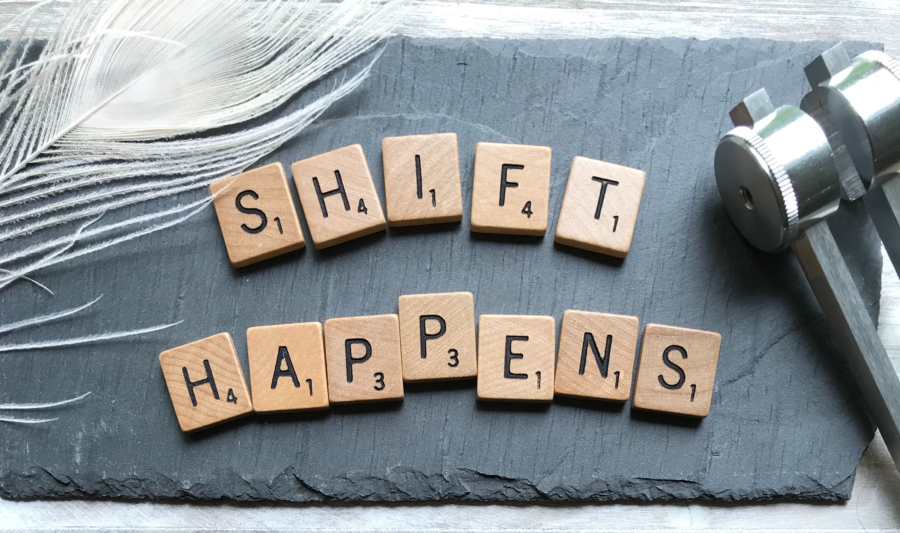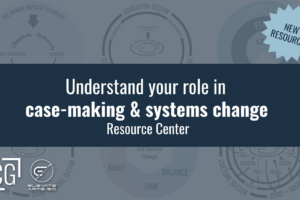There comes a time for honest reflection in the life of every arts educator and arts education program. Educators and community partners spend every waking moment pursuing the delivery of meaningful arts instruction on behalf of students, the ultimate beneficiaries of our work. As a field we are so busy with the day-to-day business of education that we often forget to look up and take a breath.
We benefit from turning the lens from an outward programmatic focus to an internal reflection of personal, professional, and workplace health.
Education institutions as well as corporate and cultural partners live within a shifting landscape, now more than ever. The arts education world does not exist in a vacuum; it is shaped by cultural, demographic, geographic, political, personal, mental/physical health, and financial forces. We would be well-served as a community to understand how the interplay and shifts among forces impact our work as individuals and collectively.
Dynamics of Shift
There are natural moments in the life cycle of any arts education program that may cause a shift. A shift can signal an inflection point– a time of significant change. Sometimes the shift barely registers, sometimes it feels like a tsunami. Naturally occurring shifts may be caused by:
- Changes in leadership, staffing, and organizational structure (internal or external)
- Changes in prevailing attitudes and beliefs
- Increasing or decreasing enrollment or financial support
- Changes in access to facilities and equipment
- Perceived obstacles in program delivery
- New opportunities or threats
- Old guard vs. new guard
- Changes in demographics
Because of the pandemic, we are also facing ever greater societal shifts particularly around the nature of work. What it looks like. How it is delivered. How it is valued.
This is a moment like no other, prompting us to reflect on what is important and where we are going.
“What is going on?”
Take a moment to step into the balcony, away from the swirling urgency of being on the dance floor/in the classroom. Take note of what you see from a slightly removed perspective– patterns, interactions, and relationships.
Personal Inventory:
Ask yourself the question, “What is going on in my life that supports or inhibits progress toward my professional goals?” (More about goal setting below.) On the support side, you may include a supportive boss, great colleagues, eager students. On the inhibiting side, you may include motivational shifts, relationship changes, family issues. Be honest and kind.
Workplace Inventory:
Ask the same question among your colleagues. “What is going on in our workplace that supports or inhibits progress toward our goals?” We work in a complex arena with community stakeholders and partners beyond the school setting. Parents and community members may have different perceptions and assumptions about what is needed to be successful. How we listen to and navigate those differences is where breakthroughs in understanding happen.
Goal Setting
Leave the big, hairy, audacious goals to the side for a moment (e.g., music and arts for all). While important, it can feel overwhelming to know where to start/what to do. In a reflective process, begin with modest, manageable, bite-sized support/inhibit statements. (See above.) Do others have similar responses? What concrete, measurable goals are revealed as a result? “My program isn’t getting the kind of attention I think it deserves.” (Suggested goal: Achieve greater visibility with monthly performances at school board meetings.) “My administrators don’t support my programs.” (Goal: Demonstrate best practice by sharing good news stories spotlighting supportive principals.) “I want students to connect more with our community.” (Goal: Outreach to community by inviting music and arts professionals for career Q&A.)
What does it mean for me/us?
This deceptively simple question— “What is going on?” — opens the door to the point of inflection. Once we understand what is going on, then we ask what it means and what we wish to do about it. The process leads to deeper conversations built on shared values. Conversations that ultimately build trust and reveal underlying issues and perceptions that may have been ignored or underreported. Conversations that lead to narratives for advocacy and successful outcomes for the group.
Because shift happens.
~~~~~~~~~~~~~~~~~~~~~~~~~~~~~~~~~~~~~~~~~~~~~~~~~~~~~~~~~~~~
This article to appear in School Band & Orchestra Magazine, December 2021 edition.
Shift Happens Photo by SOULSANA on Unsplash





